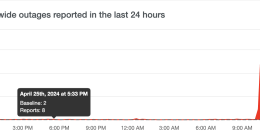
April 7, 2021 7 min read
Opinions expressed by Entrepreneur contributors are their own.
The past year has brought a seismic shift to digital commerce. The pace of change has put many consumer brands in reactive mode, ensuring they are set up and advertising across all platforms.
However, approaching each platform individually — and without understanding their nuances — is a grave mistake. A cross-platform strategy is critical to sustainable ecommerce success, and there are several strategies to get there. As these retailers compete aggressively to grab the ecommerce consumer and share of wallet, brand manufacturers are often left in the dust. If brands are feeling lost on the nuances of these ecommerce platforms, they’re not alone.
This is what you need to know when engaging with the four major retail and advertising platforms: Amazon, Instacart, Walmart and Target.
Amazon
Amazon, the largest ecommerce retailer in the United States, is a pure-play ecommerce retailer. In sharp contrast with value-added retailers such as Target and Walmart, Amazon doesn’t believe they’re in the business of selling things — they’re in the business of helping people buy things. They’re a platform for selling and delivering products, with over half of their 2020 package volume delivered by their own logistics company.
Winning search is critical for a brand’s success on Amazon, and Amazon’s platform is mostly pay-to-play. With a low barrier to entry for brand manufacturers, a loyalty-driving Amazon Prime program and fast shipping, Amazon is a necessary player for most consumer brands. However, Amazon can be expensive for brands. Between aggressive negotiations tactics with 1P vendors, chargebacks, shortage claims, advertising costs and FBA (Fulfilled-by-Amazon) third-party fees, Amazon is often a manufacturer’s highest cost-to-serve channel.
From the consumer perspective, Amazon’s weak points are in their overwhelming consumer shopping experience, distrust of product and review authenticity, and environmental impact. Amazon’s future success is based on continued innovation in both the advertising platform and operations to help offset pure-play ecommerce shipping costs. They need to remain focused on overcoming consumer trust challenges regarding counterfeit products and fake reviews. Lastly, the past year of antitrust activity may present new challenges and requirements for Amazon, affecting future profit flows.
Related: Gen Zers Are Bragging About Making Upwards of $3 Million as Amazon Sellers. Is It Really That Easy?
Instacart
Instacart is a grocery service platform that partners with more than 500 retailers and 40,000 stores in the U.S. and Canada. Instacart isn’t a grocer or an ecommerce retailer; they’re a platform intermediary that sits on top of the retailer’s assortment and provides a delivery service. The consumer can order through Instacart directly from Instacart.com or from the retailer’s website, using Instacart’s technology and delivery service.
Instacart has two revenue streams: retailers who pay Instacart to be listed on their platform or use Instacart’s fulfillment and technology on their websites, and ad revenue from consumer brands (CPGs) who advertise on their platform. The more sales velocity brands drive on their items, the more Instacart’s algorithms continue to promote them, such as in their high-converting and coveted “buy it again” personalized merchandising. Instacart is generally generous with data on advertising results, but does not share retailer-specific data, a complicating factor when manufacturers want to attribute sales to a specific channel.
Instacart’s future is dependent on their ability to get the consumer to start their shopping experience on Instacart instead of on the retailer’s website. As more brick-and-mortar grocers build their own online stores and order fulfillment, Instacart must be positioned as an incremental traffic-driving platform. Otherwise, brands will seek to build or buy these capabilities, rather than rent them from Instacart. In addition, retailer product prices on Instacart are often higher to cover the increased costs of the platform. During the pandemic, Instacart flourished. But once normalcy is restored, will consumers still tolerate higher price points, or will they choose a lower-priced, BOPIS (Buy Online Pickup In Store) solution? The answer is still an unknown.
Walmart
For many manufacturers, Walmart brick and mortar’s approximately 5,000 United States locations have long been an integral part of their business. However, the past two years have brought significant and aggressive investment in ecommerce as Walmart goes head-to-head with Amazon. From in-store pickers to dark stores, BOPIS, fulfillment centers, and micro-fulfillment centers, Walmart’s throwing everything at the wall to bring down order fulfillment costs and find a path to profitable grocery ecommerce.
Walmart has a few Amazon-lookalike programs: Walmart+ only launched one year ago and 21% of all consumers subscribe to it, making it a strong competitor for Amazon’s Prime program. To best compete with Amazon’s consumer reviews, Walmart allows manufacturers to syndicate reviews from their own websites. Also, Walmart’s been growing its ad platform, Walmart Connect, to help offset the expenses of shipping directly to consumers. Their third-party platform also looks a lot like Amazon’s, but Walmart vendors and sellers still need to apply and be approved to join.
While Walmart has consolidated their brick-and-mortar and ecommerce buying teams to improve efficiency, the platform is not self-service yet. Unlike Amazon, most ecommerce item changes, promotions, and the like need to go through a Walmart buyer, which can slow consumer brand success.
Unfortunately for Walmart, they’re held to different standards by Wall Street than Amazon. While Amazon’s viewed as a technology company, and was “permitted” to lose money for many years as they built their infrastructure, fulfillment, and lost money on free shipping while they acquired consumers, Walmart is held to the standards of an established retailer. Their challenge will be getting through this next push of ecommerce investment to drive scale and reduce costs.
Related: 4 Pillars of the New eCommerce Frontier Entrepreneurs Need to Embrace
Target
For Target, having an on-trend assortment is key to their success and what keeps consumers coming back for more. For consumer brands, having shelf space at Target’s highly trafficked stores has long been a part of business. Famously less interested in ecommerce, Target has remained focused on in-store and BOPIS consumer traffic.
Target has also recently gotten into the retailer digital advertising game with their Roundel advertising launch. However, the platform is not self-service yet. All advertising initiatives and changes must go through Criteo, which is Target’s ad platform provider.
Many brands are increasingly viewing Target as a competitor. Target is excellent at launching and growing branded private label products. Target activewear brand All in Motion has generated more than $1 billion dollars in sales within a year, and their recent launch of Mondo Llama art supplies is off to a strong start.
Given that on-trend, inspiring choices are critical success drivers, it’s no surprise that Target has a high barrier to entry for brands and sellers. Buyers must approve all new assortments online, and their third-party marketplace is closed to a few trusted resellers.
Target’s success is steeped in truly understanding the consumer, matching their inventory correctly, and sticking to what they’re good at. Going forward, Target has to find ways to continue to win in key categories such as grocery and beauty to keep a foothold against Amazon and Walmart. This will also help them ensure repeat foot traffic in their stores.
Key Takeaways
As Amazon, Target, Walmart, and Instacart duke it out for the ecommerce consumer, who wins? Do the consumers win, or are they a beneficiary of these aggressive tactics? Do the brand manufacturers win, as they have more ecommerce platforms ready to deliver products to consumers? Or do the retailers win, because they hold power of assortment decisions and command advertising dollars?
While it may seem that Amazon, Target, Walmart, and Instacart are in a land grab for the ecommerce consumer, a closer look shows that their strategies and tactics are quite different. Understanding the key differences and how to optimize for them is key to manufacturer success on marketplace platforms.
Related: A Beginner’s Guide to Building a Profitable Ecommerce Business
loading…
This article is from Entrepreneur.com








